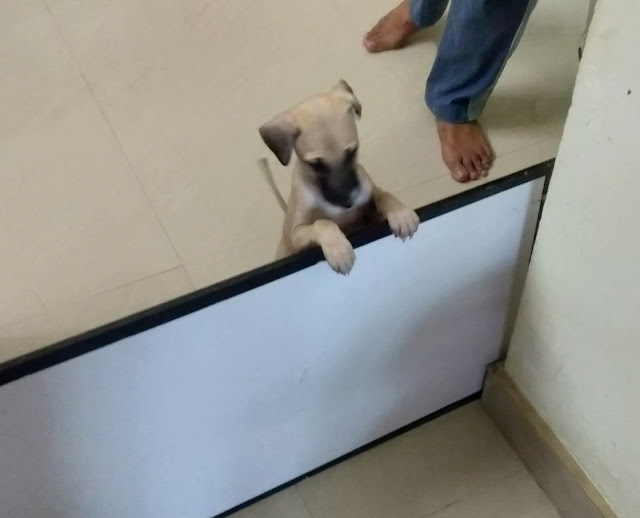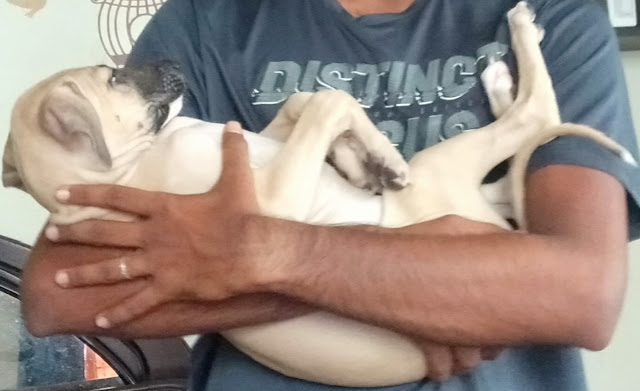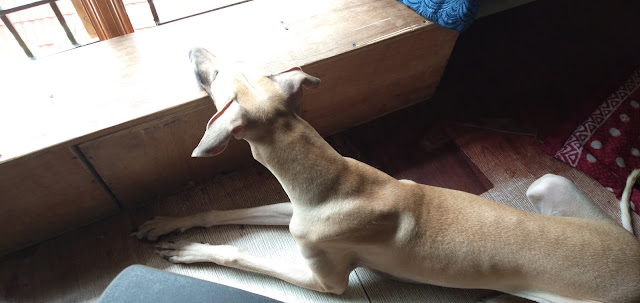Symptoms of Heat Exhaustion and Heat Stroke in Dogs
Chezhi experienced symptoms of heat exhaustion. Thanks to doctor's timely intervention, she became normal soon. But the process was a tough lesson for our family.
Little did I realize what Chezhi was undergoing during those moments when she suffered from heat exhaustion and the days leading to that particular day. It was supposed to be our routine night walk. But it was not to be. Suddenly, Chezhi started getting restless and began pulling me pretty hard. It seemed like she wanted to rush back home. She would have run faster had I not had the leash control. That felt weird.
The moment we stepped into our home, she headed straight to the bedroom. The door was closed as the ac was turned on. Generally, Chezhi would wait patiently in the living room for me. That day, she did not wait for me.
When she saw the closed bedroom door, she came back to me and my husband, kept nudging us and returned to the bedroom door. We asked her to wait for sometime. She again walked towards the closed door and looked at us.
We felt it to be strange. Seeing us not joining her, she settled on her little bed in the living room. She seemed sad. We decided not to make her wait. I went near her and was shocked to see some bubbles outside her mouth. Next moment, we all were around her and she had more of it coming.
We called the doctor, who asked us to immediately take her to the tap and let running water on her head and all over the body and then call him back. Dad and Big B took care of it and then we called the doctor again. He asked us to check her temperature. While we were at it, he asked us a few more questions and then said that Chezhi had heat exhaustion. He proceeded to advice us on how to take care of her the next few days to ensure she gets fine.
It was then we realized why Chezhi wanted to enter the bedroom. She wanted to be in the airconditioned room. My husband and I felt so guilty that we didn't take her in the moment she asked for it considering the fact the girl never forces us to get anything done. Our guilt knew no bounds.
Chezhi became normal as we proceeded to follow doctor's recommendations.
And what were his recommendations?
1) No walking for the next few days. If she has to be walked, it got to be in the early morning before sun rises or after sunset...and it has to be only for very few minutes.
3) Cool and fresh water should be made available for her round the clock.
4) More hydrating foods to be added to her diet.
So, what is heat exhaustion in dogs? What is the difference between heat exhaustion and heat stroke?
Heat Exhaustion and Heat Stroke in Dogs
Unlike humans, dogs cool themselves by sweating through their paw pads and nose. With normal body temperature being higher than in humans and with fewer sweat glands, dogs can get overheated even in weather conditions we do not find so hot.
Heat related conditions can cause severe damage if not attended to immediately.
Heat stress is the milder form of heat related illness. If left unattended, it can worsen and cause heat exhaustion, which could lead to heat stroke.
Symptoms of Heat Exhaustion in Dogs
The normal body temperature of dogs is between 101o to 102.5 o Fahrenheit. When dog suffers from heat exhaustion, body temperature can rise above 103o. If the temperature keeps on rising, it could lead to heat stroke.
Some of the signs of heat exhaustion in dogs include:
- Increase in temperature
- Heavy panting
- Hypersalivation
- Rapid heart rate
- Increased thirst
- Weakness
- Restlessness
- Vomiting or diarrhea
- Body temperature rising beyond 103o
- Very severe panting
- Hypersalivation of thick saliva
- Black or tarry stools
- Restlessness
- Becoming distressed
- Lack of coordination
- Unwilling or unable to move
- Dry gums, sticky to touch
- Discoloration of gums
- Muscle tremors
- Seizures
- Obesity
- Flat-faced dogs
- Breeds with long, thick hair
- Young and senior dogs
- Previous incidence of heat stroke
- Exposure to high temperatures like being out on a hot day or leaving the pet in a car unattended on a hot day.
- Lack of access to clean and fresh water leading to dehydration, which may result in heat exhaustion and heat stroke.
- Lack of acclimatization
- Keep your dog hydrated. Always ensure fresh and clean water is available for your pet 24x7.
- Avoid taking the pet out on hot summer days.
- Never give strenuous exercises to your pet when the weather is hot.
- Ensure shelter is provided when your pet is outdoors.
- Never leave your pet in parked car during hot weather or even if the weather is mild. The interior of a parked car gets much hotter than outside within few minutes even if the window is cracked open.








Comments
Post a Comment